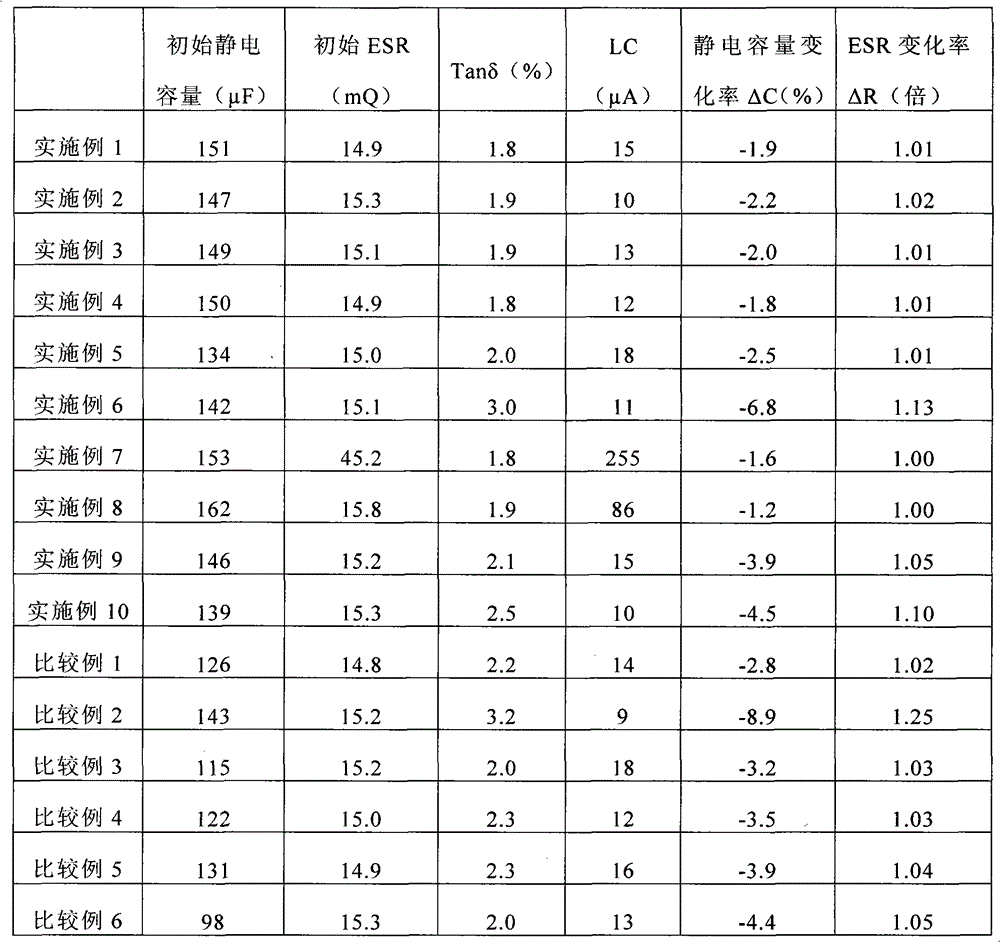Manufacturing method of electrolytic capacitor
A technology of electrolytic capacitors and manufacturing methods, applied in the direction of electrolytic capacitor manufacturing, electrolytic capacitors, capacitors, etc., can solve the problems of electrolytic capacitors, such as electrostatic capacity, electrical characteristics and reliability reduction, and achieve the effect of high electrostatic capacity and reliability
- Summary
- Abstract
- Description
- Claims
- Application Information
AI Technical Summary
Problems solved by technology
Method used
Image
Examples
Embodiment 1
[0039]First, an aluminum foil whose surface has been roughened by etching is immersed in a chemical conversion solution containing an ammonium adipate solution, and a voltage is applied to form a dielectric film on the surface of the aluminum foil. Then, the aluminum foil on which the dielectric coating was formed was cut to produce anode foil 21 on which the dielectric coating was formed. Thereafter, lead wires 14A, 14B serving as terminals are connected to anode foil 21 and cathode foil 22 made of aluminum foil via lead tabs 15A, 15B, respectively. It should be noted that copper-clad steel wires are used for the lead wires 14A, 14B. Then, the anode foil 21 and the cathode foil 22 were wound through a separator 23 containing 90% by weight of vinylon fiber and 10% by weight of polyvinyl alcohol (PVA), and the winding was stopped with a winding stop tape 24 to produce a capacitor element 10 .
[0040] Next, the capacitor element 10 was immersed in a 25° C. chemical conversion ...
Embodiment 2
[0045] An electrolytic capacitor was fabricated by the same method as in Example 1 except that the separator 23 containing 90% by weight of nylon fibers and 10% by weight of PVA was used as the separator.
Embodiment 3
[0047] An electrolytic capacitor was produced in the same manner as in Example 1 except that the separator 23 containing 90% by weight of acrylic fiber and 10% by weight of PVA was used as the separator.
PUM
| Property | Measurement | Unit |
|---|---|---|
| diameter | aaaaa | aaaaa |
| height | aaaaa | aaaaa |
| thermal degradation temperature | aaaaa | aaaaa |
Abstract
Description
Claims
Application Information
 Login to View More
Login to View More - Generate Ideas
- Intellectual Property
- Life Sciences
- Materials
- Tech Scout
- Unparalleled Data Quality
- Higher Quality Content
- 60% Fewer Hallucinations
Browse by: Latest US Patents, China's latest patents, Technical Efficacy Thesaurus, Application Domain, Technology Topic, Popular Technical Reports.
© 2025 PatSnap. All rights reserved.Legal|Privacy policy|Modern Slavery Act Transparency Statement|Sitemap|About US| Contact US: help@patsnap.com



